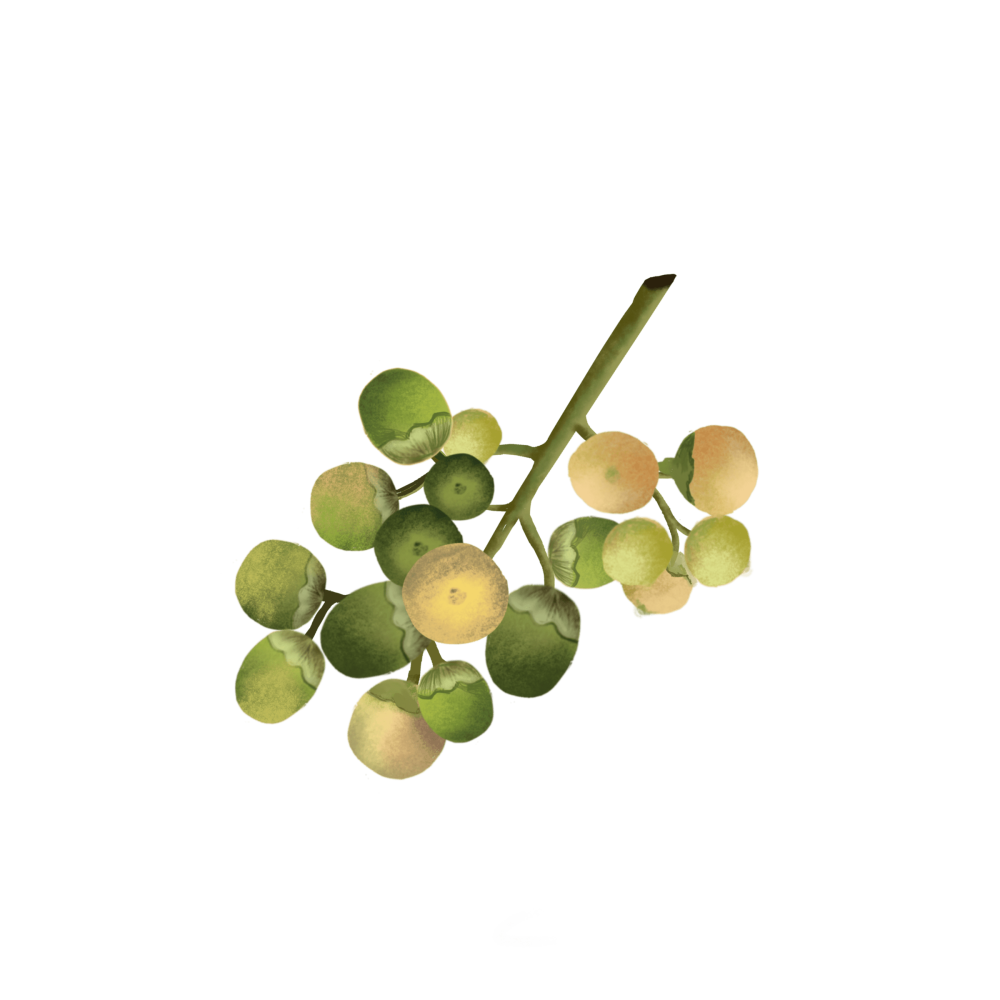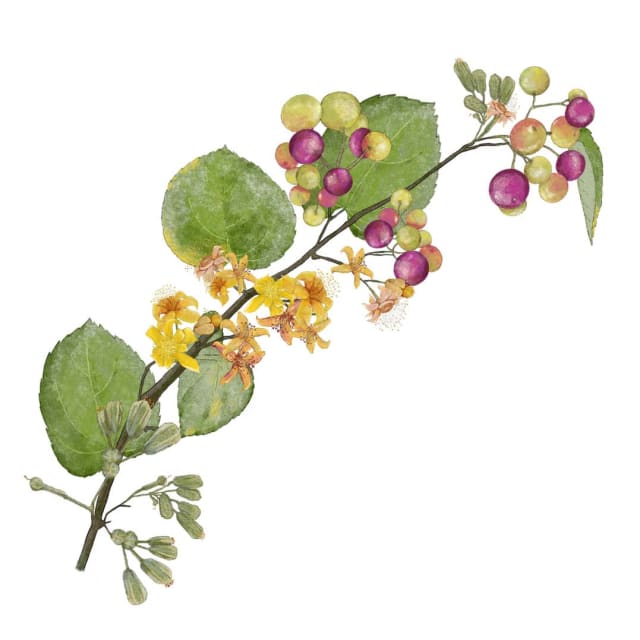Gum Berry

Latin name: Cordia dichotoma Forst.
Other names: Indian cherry, fragrant manjack, clammy cherry, bird lime, gunda, lasura, bhokar, shleshmataka, glue berry
Uses: pickle, vegetable, juice, stir-fry, country liquor
The gum berry is a thumb-sized tropical fruit with a stony pit and gelatinous, slimy flesh that earns it the not-so-endearing moniker “snotty gobbles” (not to be confused with Persoonia longifolia, also called snottygobble). A member of the borage family, the gum berry fruits in India from March to June, where it is eaten and preserved in various ways. The unripe, olive-like berry is used for pickling (choose medium-sized, dark green ones) and as a vegetable, especially in arid and semi-arid regions, where it’s a means of sustenance in frugal pantries.
Why is it healthy?
The fruit, leaves, bark, and seeds of gum berry trees may have analgesic, anti-inflammatory, antidiabetic, antiulcer, wound-healing, and immunity-boosting properties. Many traditional medicine systems use the plant to treat common colds, coughs, respiratory problems, and fever. In India, the flower is mixed with yogurt and applied to the skin as a traditional sunscreen.
What does gum berry taste like?
Without a pronounced sour or bitter taste, the unripe gum berry is just slightly tart. When pickled or cooked, it gains a silken texture reminiscent of an olive. The ripe, pale yellow-pink fruit is sweet and can be eaten raw or used to make a local liquor.
Where does gum berry grow?
The perennial tree is native to south and southeast Asia. In India, it grows wild in northern and western regions. The species provides a vegetative cover, serves as a windbreak, and thrives in deciduous forests, moist ravines, valleys, and regions with a semi arid climate.
How do I prepare gum berry and what do I pair it with?
To deseed the fruit, a salt-rimmed knife works best, as it cuts through the slimy insides and prevents the gum from sticking to your fingers. Stuff the immature fruit with spices, pickle it and relish with Indian breads such as theplas, or rice preparations. Or use it as a vegetable, adding it to steamed fish, a stir-fry with tofu, or a soup as is done in Taiwan (where it’s called Chinese caper or pobuzi). Blanched and dehydrated, the berry can be stored throughout the year. It pairs beautifully with raw mango, raw papaya, ker (Capparis decidua), sangri (Prosopis cineraria), pickling herbs and spices such as mustard, fenugreek and carom seeds, as well as fennel, tamarind, drumsticks, gram flour, and black beans. The juice is also used to flavor sorghum beer in parts of Africa and northern India.
Surprising fact:
The seed kernel of gum berry is rich in unsaturated fatty acids. In the 1970s, Indian scientists combined the oil from gum berry kernels with tobacco seed oil to form a non-sticky mass called “factice,” which is used to produce a rubber substitute.





